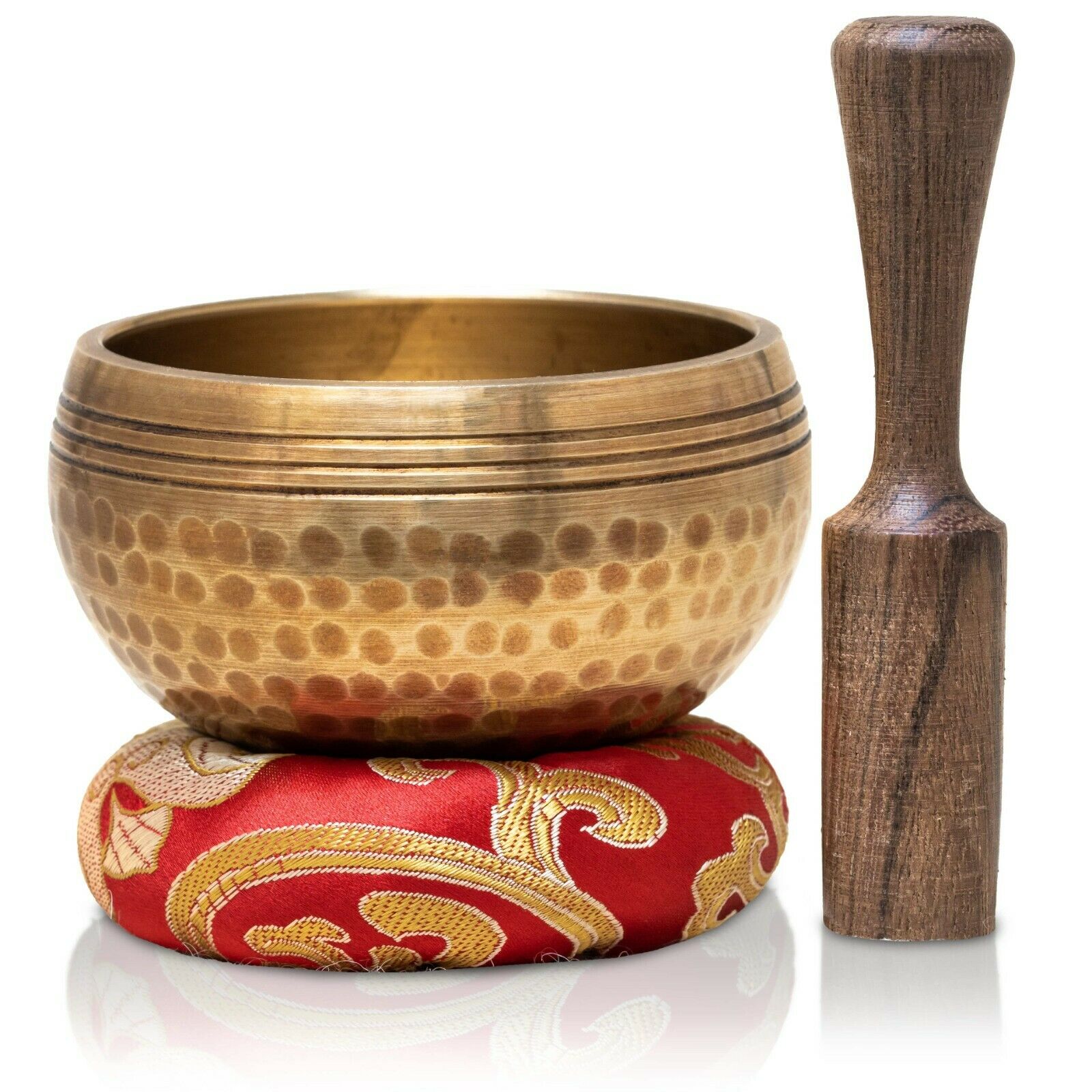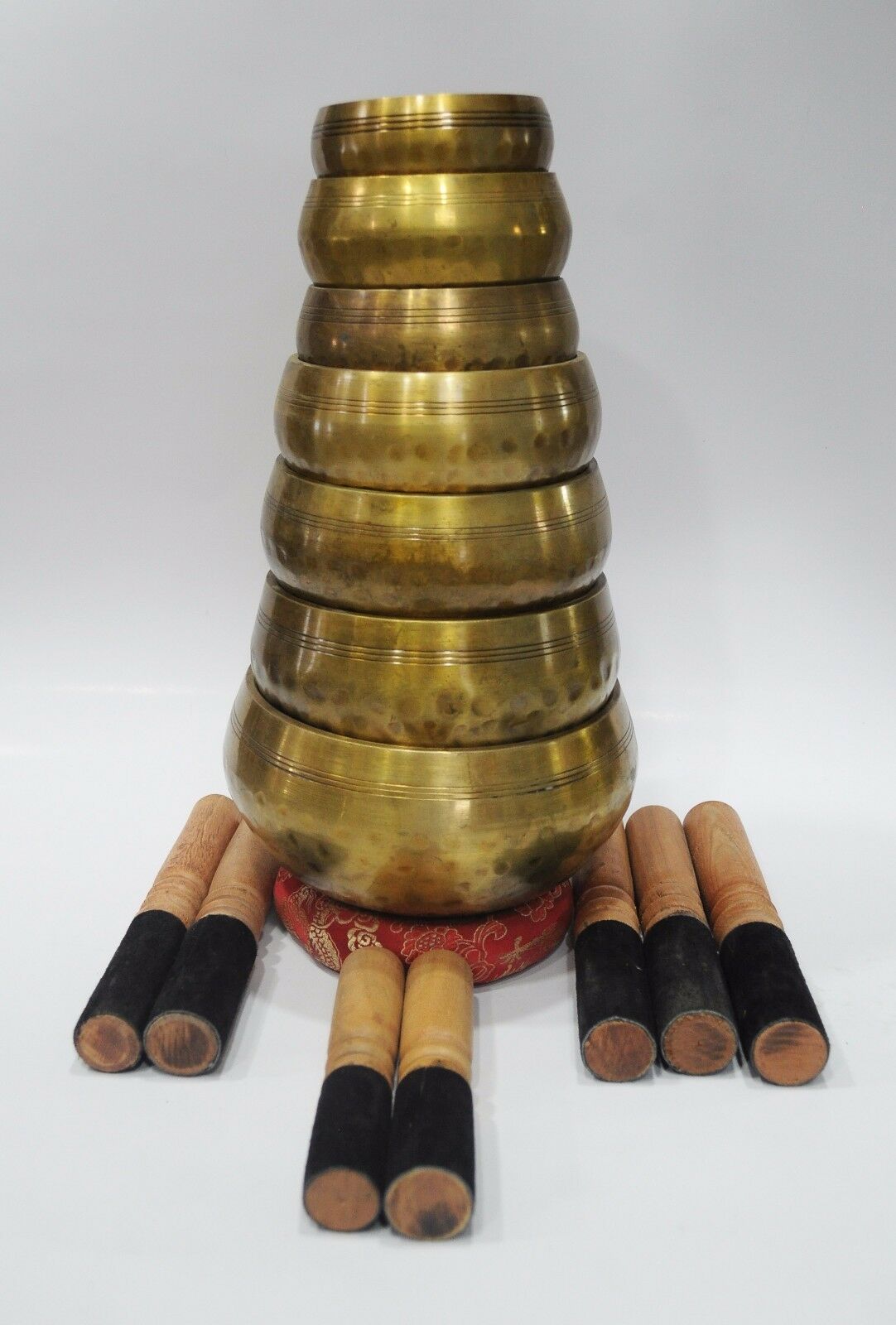-40%
BARGAIN TIBETAN BUDDHIST BRASS 3 BLADED 7 3/4" TANTRIC RITUAL DAGGER PHURBA KILA
$ 11.85
- Description
- Size Guide
Description
BARGAIN TIBETAN BUDDHIST BRASS 3 BLADED 7 3/4" TANTRIC RITUAL DAGGER PHURBA KILA NEPALTraditional Tibetan Buddhist Tantric ritual dagger, phurba, phurpa (Tibetan) or kila, kilaya (Sanskrit)
traditional 3 sided blade
Tibetan Buddhist ritual items have no power when used by non-practitioners
the sides of the Phurba destroy the three poisons: attachment, aversion, delusion
.
Sea creature Makara holds the 3 sided blade in his mouth:
Makara are considered guardians of gateways and thresholds, protecting throne rooms as well as entryways to temples; it is the most commonly recurring creature in Hindu and Buddhist temple iconography, and also frequently appears as a
Gargoyle
or as a spout attached to a natural spring.
Exhibits 2 heads; the bottom one is the wrathful protector Mahakala but I am not sure who the top one is
I have included a picture of 3 different phurbas together so that you can see that there is some variation in metal tone
middle section is 4 pronged dorje, vajra
solid brass
7 3/4 inches in height, 6 ounces in weight
Among a myriad of definitions and descriptions of the phurba and its use: in Buddhist ceremonies it is used to pin down the distractions of greed, desire, envy.
the 3 sided blade is held in the mouth of the mythical sea creature Makara and represents the power to transform the "3 poisions", or kleshas, into wisdom
often associated with wrathful
Vajra-kila-ya, who holds a phurba in one of his hands (see the picture below)
made crafted and finished in Nepal
for more information about Garuda and also, the use of the phurba, please scroll down
Buy With Confidence:
We are practicing Buddhists
We respect the importance of these religious materials
We use the same products that we sell
USA-based
—————————————-
***MUCH MORE ABOUT THE PHURBA:
In Sanskrit it is called the kilaya or the kila, and in Tibetan it is called the phurba, phurpa. The phurba is also called 'the magic dagger'. 'Phur' is translated from the Sanskrit 'kila' and it means peg or nail. Padmasambhava is widely assumed to have invented the phurba. Padmasambhava used the phurpa to consecrate the ground when he established the Samye monastery in the 8th century. The phurba is a three-sided stake that is used in Buddhist rituals. Because Tibet has always been a nomadic culture, the tent is an important part of Tibetan lives, and placing the tent pegs into the ground is always seen as sacrificing the ground. The shape of the phurpa may have come from the stake used to hold down tents.
The three-sided style of the phurba comes from an ancient vedic tool used to pin down sacrifices. The phurba has three segments on its blade. The three segments represent the power of the phurba to transform negative energies. These energies are known as the 'three poisons,' and are attachment, ignorance, and aversion. The three sides of the phurba also represent the three spirit worlds, and the phurba itself represents the axis of the three spirit worlds. The phurba brings the three spirit worlds together. The handle of the phurba represents 'wisdom', while the blade represents 'method'.
The phurba is often stabbed down into a bowl of rice or other grains in Tibetan rituals. Phurbas can be made from wood, bone, or metals such as copper and brass. If more than one metal is used to make a phurba, it is done in a combination of three or nine metals, which are both meaningful combinations numerically.
There are always carvings at the top of phurpas.
The phurba symbolizes stability, and it is often used during ceremonies. The phurba is often used by Tantric practitioners. The phurba can also hold demons in place. Only those who are empowered to use the phurpa may use it in these rituals. The phurba can be used to tether negative energies during ceremonies, or as a stabilizer. The blade on a phurba is never sharp, it is only used as a ritual dagger, not an actual weapon.
The phurpa is also used by Dorje Phurba a.k.a. Vajrakilaya, who is the wrathful form of Vajrapani (who is one of the wrathful deities). Vajrakilaya is often seen holding the phurba on Buddhist statues and thangkas (Buddhist paintings). Vajrakilaya is a wrathful deity who removes obstacles. Vajrakilaya's consort is Khorlo Gyedunma, and she is a manifestation of the Green Tara.
Phurpas are only to be used ritualistically by Shamans or those who have been taught how to properly do so. To use the phurba, practitioners first meditate, then they recite the sadhana of the phurba, and invite the deity to enter the phurba. They then stab the phurba into the ground, or into a bowl of rice or grain, and imagine that the evil spirits or negative energies are underneath the blade. Phurpas can also be used as decoration in homes and temples, and many use phurbas as part of their meditation rooms
The Tibetan Buddhist phurba represents a dagger (although phurbas are not sharp) and is used in Buddhist Tantric philosophy to represent the ability to overcome obstacles and destroy evil. The phurba is also called a kila or kilaya. The kilaya is used in Himalayan shamanic ceremonies as well as in Buddhism.
View more great items

















